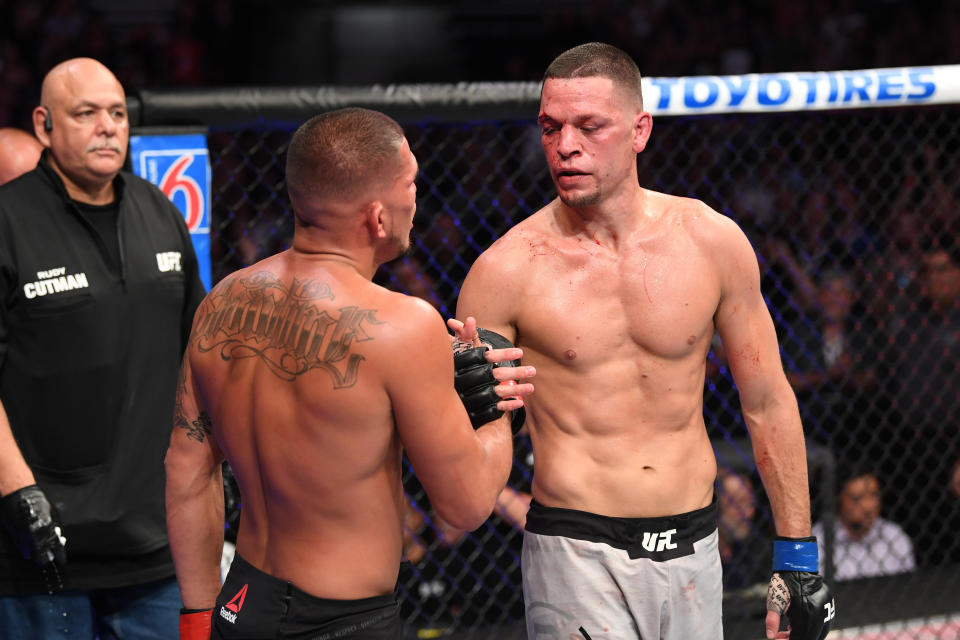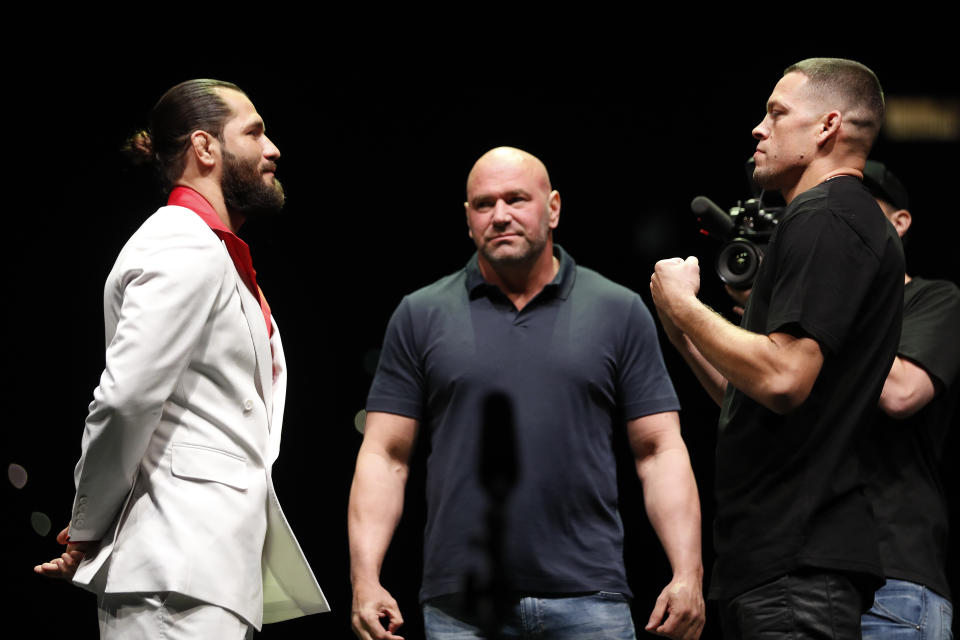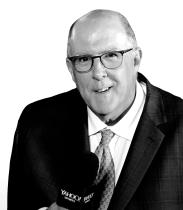Nate Diaz case shows UFC's anti-doping program is finally hitting on all cylinders

LAS VEGAS — On the day in 2015 when the UFC announced it would partner with the United States Anti-Doping Agency to drug test its athletes in an effort to take performance-enhancing drugs out of mixed martial arts, former UFC owner Lorenzo Fertitta made an ominous observation.
“It’s going to get worse before it gets better,” Fertitta said in 2015, with no great joy.
And he was right.
Athletes tested positive that caused bouts to be canceled. Sometimes, they were victims of contaminated supplements, but their names were thrown out in public before they’d had an opportunity to defend themselves, and they were presumed cheaters by the masses. And other times, fighters who had been tested prior to their bouts competed, and then only later were the positive tests discovered.
But the program has turned the corner and is doing what it is supposed to do: Catching the cheaters, cleaning up the sport and making certain that those who tested positive through no fault of their own aren’t robbed of a chance to not only make a lot of money, but to win fights and enhance their legacies.
The most recent evidence of the positive direction of the program came Friday, when UFC and USADA officials announced that Nate Diaz had not, in fact, committed an anti-doping violation and was free to fight Jorge Masvidal on Nov. 2 at Madison Square Garden in New York in the main event of UFC 244.
Diaz had been taking an organic, plant-based, vegan multivitamin that turned out to be contaminated with a banned substance, LGD4033. He tested positive for an incredibly small amount, about 10,000 times less than the amount needed to comprise one therapeutic dose.
For years, the cheaters were always well ahead of the testers, but the tables have turned. Testing has become so refined that it can discover substances as minute as one picogram. That’s a millionth of a gram.
When the testing wasn’t as efficient as it is now, regulatory bodies assessed strict liability on the athlete when it came to doping. If there was a banned substance in your body, you were guilty because, as the saying went, the athlete was the captain of his/her own ship and responsible for what went into his/her body.
The testing is so advanced now, though, that there comes a time when strict liability is no longer fair or equitable, and the Diaz case is a perfect example.
He had a microscopic amount of a banned substance in his body that was not nearly enough to give him a performance-enhancing benefit. He submitted his multivitamins, which were in capsule form, for analysis.
The Sports Medicine & Researching Testing Laboratory in Salt Lake City examined two bottles of the vitamins Diaz provided. They opened the capsules and poured the powder out and analyzed it. Both bottles were contaminated with LGD4033.
Were it not for Diaz angrily announcing the positive test on social media on Thursday and saying he wouldn’t fight, the public would never have known.

About a year ago, the UFC made a change in its plan that was long overdue. It stopped publicly announcing every time a fighter tested positive. Instead, it would not announce positive tests until the finding was confirmed and the appeals process, if any, was exhausted.
This prevented athletes like Diaz, who took a perfectly fine substance, from being treated like cheaters.
The fighter always has the right to release his/her test results, and on Thursday, Diaz chose to do so. Had he showed restraint and not tweeted, USADA’s finding that he did not cheat would not have been made public, and his reputation wouldn’t have been damaged one bit.
Dr. Matthew Fedoruk, USADA’s chief science officer, said of Diaz in a letter to the New York State Athletic Commission, “In my scientific opinion, based on the daily ingestion of a contaminated multivitamin product with LGD4033 … there is unequivocally no therapeutic or performance-enhancing advantage at such low ultra-trace doses.”
So the fighter has control what information becomes public until there becomes a finding of a violation.
The program has its critics, but it is not only the strongest anti-doping testing platform in sports, it is evolving to meet real-world needs.
The goal, ultimately, is to keep someone who is blown up artificially on PEDs from getting into the Octagon and hurting an unaware opponent.
The program isn’t perfect, though it goes without saying that no program is. But it’s made great strides and cheaters have largely been rooted out. Those who still try are caught.
Many of the critics of the UFC’s programs are vocal because they don’t understand the science. The critics will state that with so much money at play — and have no doubt, the UFC would have sustained serious, significant financial losses were the Diaz-Masvidal fight scrapped — that people will willingly look the other way.
But to buy that is to believe that people who have dedicated their lives to ridding sport of performance-enhancing drugs would so easily be bought off.
Diaz deserved to be allowed to fight because he didn’t cheat, and he did everything he could to make sure he complied with the anti-doping regulations.
Fighters in his situation ought to sue the supplement manufacturers and force them to take steps to not have this kind of contamination happen so routinely.
The correct outcome was for Diaz to be allowed to fight, and he will.
More often, the UFC/USADA program is coming up with that type of outcome. Fertitta was right when he said it would get worse before it gets better. But the skies are once again blue, and it looks promising that even better days are ahead for this anti-doping effort.

More from Yahoo Sports:

